Art, Architecture and Nightlife in Amsterdam
The gay history of Amsterdam was not always one of tolerance, however. It’s hard to believe that this progressive and forward-thinking bastion of acceptance once hanged gay men publicly. Records detail gruesome tortures to elicit witch-trial-type confessions as late as the 1800s. It wasn’t until the hippy ’60s that the Dutch even allowed such “undesirables” to congregate privately and eventually decriminalized homosexuality. But in the decades since, the city has shone like a beacon of hope, spreading by example its ray of acceptance and solidarity worldwide.Gay Pride & Events
Amsterdam’s official Gay Pride orbits around the world-famous Canal Parade. Instead of floats driving down a road, this pride parade literally floats down the waterways of Amsterdam. Lavish displays and dozens of boats ply the canals of the city as the parade sails down its arteries. Although not a gay pride per se, the celebration of koninginnedag, the Monarch’s birthday (April 30), brings out all the guys and gals. Gay bars and clubs have special parties that spill onto the streets, with orange beer flowing in all taps to honor the ruling House of Orange.
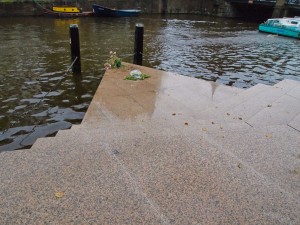
Locals and travelers alike leave flowers at the homomonument, in remembrance of gays and lesbians killed in concentration camps and persecuted since the war // (c) 2012 Nathan DePetris
A trip to Amsterdam isn’t complete unless we pay homage to the countless gays and lesbians persecuted and killed worldwide at the Homomonument. Located in front of the Westerkerk which is synonymous with the nearby Ann Frank house, the monument commemorates gay and lesbian lives lost during the holocaust and in decades since. A granite pink triangle, the symbol used by Nazis to brand gays in concentration camps, sits on three elements: one side is on the ground, one raised up to the air, and the last jutting out into the canal such that three smaller triangles form a larger one.
Fine Arts
At the Rijksmuseum, the building itself is a masterpiece by architect Pierre Cuypers, and is undergoing renovations through 2013. This exquisite example of neogothic architecture houses some of the richest displays of fine art, including Dutch masterpieces by Rembrandt and Vermeer. Conversely, the Stedelijk museum exhibits modern art ranging from impressionists, fauvists and cubists, to contemporary: works including Matisse, Picasso and Warhol. If you’re looking for works by Van Gogh, most can be found in his namesake museum which has recently been expanded and renovated.

Our Lord in the Attic church at the Amstelkring Museum houses a full altar, pews, balconies, and the ever-present confessional // (c) 2012 Nathan DePetris
For the eclectic seekers, consider the Amstelkring museum, also called Our Lord in the Attic. This curiosity of Dutch history is a Catholic church spanning the tops of three row houses, literally in the attic, and chronicles worship in hiding during the Reformation. Visit the Houseboat museum to see how barges, a common sight in Amsterdam, are converted into living spaces. Spanning mankind’s history, the Sex Museum tells the story of sex, sexuality and its representations in artifacts and art.
Culinary Arts
When you ask the Dutch about their iconic cuisine, they point to a plethora of ethnic specialties that dot the city. Apparently there’s only one national dish: the ever-elusive Stomppot, a potato gruel of various ingredients. But, while finding Stomppot may be a challenge, there are numerous classics: French, Italian and Asian restaurants aplenty. One notable specialty cuisine is the Indonesian Rijsttafel (literally, rice table), imported during the colonial days when Dutch ships were plying the waters alongside the English, French and Spanish. This spread of dishes is served in a single course, featuring vegetables and meats spiced liberally. One of the best places for a tasty, moderate Rijsttafel is at Sampurna on the Singel, at the flower market.
While in Amsterdam’s gayborhood of Reguliersdwarsstraat, head to De Kroon restaurant overlooking the Rembrandtplein for the best view. The café is more than 100 years old and sports views of the square and city beyond. Another great view is from the De L’europe Terrace café overlooking the Amstel, nearby canals, and the Blue Bridge.
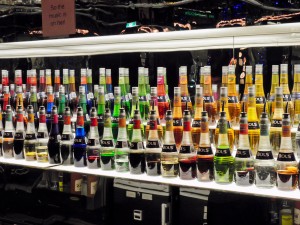
At the Bols museum and mixology experience, a rainbow of bottles tantalizes visitors from behind the bar // (c) 2012 Nathan DePetris
The Bols museum, uniquely Amsterdam, provides a mélange of history and beverage experience. There are amazing exhibits to explore and learn about the history of gin, genever and Bols company, the tour culminates with a flourishing show of mixology; you get to drink what you select to be mixed. Tip: consider buying two tickets ahead of time as each is good for two cocktails. The Bols has some of the best quality and value in town as evidenced by the locals who come here and skip the museum but head for the bar.
For a quick snack, two ubiquitous options abound: the Flams frit, or Belgian fries, are sold on virtually every corner with sauces from basic mayonnaise to more exotic flavors. Doner kebab and falafel stores dot the city as well, offering pita stuffed with lamb meat or vegetarian falafel dumplings, and side salads galore.
Other Sights, Sounds and Attractions
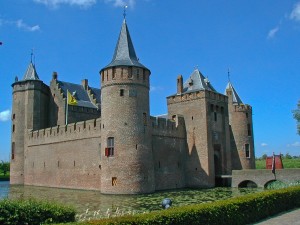
Castle Muiden, just minutes outside Amsterdam, enchants visitors with its’ fairy tale fortifications and fantastical gardens // (c) 2012 Nathan DePetris
Coffered ceilings, gilt and old world charm abound at the Old Tuschinski theatre, just around the corner from the gay bars. No matter the movie, whether it’s “Avatar” or “The Road to Zanzibar,” this architectural gem will stimulate the senses. This is how movies should be shown, with an intermission to mingle and grab a drink. Splurge a little when you visit, and purchase a box seat (request the front row as boxes have several rows), with the full champagne, fruit, nut and chocolate service; it’s a movie experience unmatched elsewhere.
Dating back to the 1200s, the Muiderslot, or Muiden Castle, is a popular local attraction featuring fantastical fortifications, a moat and gardens. It’s less than 30 minutes out of Amsterdam’s Centraal station via public transport (see castle Web site for details), and inscribed in UNESCO’s world heritage list as part of the Defense Line of Amsterdam. As a castle connoisseur, I can honestly say that this remains one of my favorite castles, a fairy tale medieval vision come to life.
Clubs, Bars and Nightlife
The city has a plethora of gay bars and clubs, many concentrated in two areas: Reguliersdwarsstraat and Warmoesstraat, both streets teaming with activity. The recent history of venues on Reguliersdwarsstraat is dizzying and involves one bar baron buying up gay clubs, then failing; it’s only through the efforts of the local community and government that these clubs have re-emerged (for a complete history, see www.reguliers.net/formergayvenues.php ). The current incarnations of all-time favorites are Bar Eve (formerly the ARC), and LudwigII (April) and the revitalized SoHo; rumor has it that Exit will re-open late summer 2012.
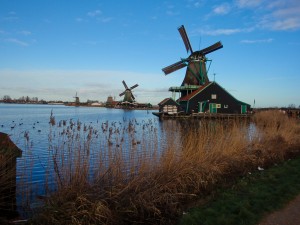
Windmills dot the shoreline of polders at Zaanse Schans village, Holland // (c) 2012 Nathan DePetris
Similarly the grungier establishment on Warmoesstraat, Cockring, has been taken over and re-introduced to the community as Club FuXXX; it’s still known for its adult parties and easy hookups. Modern and trendy with a dark industrial décor, Club FuXXX tends to draw guys with one thing on their minds. Whether in its main bar, upstairs or in the attic, hookups happen by the minute. Note that all of Amsterdam’s bars are welcoming, regardless of fetish or theme. I may not feel comfortable at a true leather bar in North America, for example, but Der Spiker, while definitely dedicated to the fetish, also felt welcoming to the average guy.
Thermos Sauna Amsterdam is by far one of the most lavish multi-level gay saunas in the world. Along with what you’d expect, it also has a full bar, hair salon, spa and restaurant all under one roof (though the locals’ warnings about the restaurant food was so severe I’ve never tried it). A relaxed atmosphere during the day attracts an after-work stud crowd, college jocks and the tourists who admire them.
Unlike the ladies of the red light district, the boys, while present, are not displayed so boldly in windows. It’s rumored that, while the Dutch people and government were ambivalent to the idea of equal opportunity for the boys to work in the red light menageries, too many tourists (probably the same ones oogling the ladies) complained about having scantily clad men on display. So if you want to see a working boy, or have a drink or chat, you’ll have to find one of the few private clubs and get buzzed in. Once past the cloak-and-dagger routine to enter, it’s actually quite a pleasant and unique atmosphere. Two reputable clubs, established and licensed, are the Blue Boy and “Y,” both near the central station.
Accommodations and Logistics
When I visit the city, I usually stay at the Golden Bear Hotel, a three-star gay B&B mostly with shared (and some private) baths. While the décor may be Spartan, the location, comfortable duvet beds, and cooked-to-order breakfast can’t be beat for the price. For a menu of accommodation options, Eden Hotels Group offers six three-star and four-star hotels strategically located throughout Amsterdam. All Eden hotels in the city and the Golden Bear are members of IGLTA (International Gay & Lesbian Travel Association), a testimony of their commitment to catering to gay and lesbian guests.
Trains and Trams
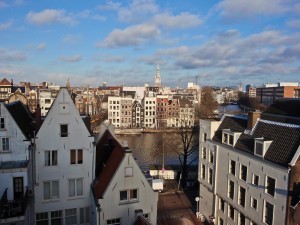
Birds-eye view of Amsterdam’s heart from a typical veranda overlooking the Amstel river, as viewed from the Rembrandtplein // (c) 2012 Nathan DePetris
From airport to city, visitors should take the train. Even if you plan to grab a cab when you get to the city’s central station, taking a train from the airport is easier than finding your flight’s gate. Follow signs outside security and passport control to the central terminal area, where huge tunnel-like ramps lead down to the train concourse. Outside are bright yellow schedules showing which platforms will have the next train, based on the time of day, and it’s as easy as boarding the first train with “Amsterdam Centraal” displayed. Tickets can be purchased from kiosks or a ticket window. The short train ride is not only pleasant, but also the most efficient way to get to the city center.
Once at the central station, another architectural gem designed by Pierre Cuypers, you can take a tram to virtually anywhere in this small-big-city. If you skipped the tram and cabbed-it with your luggage, you should seriously consider taking the tram for hops around the city’s attractions. Passes can be purchased both outside the station, near tourist attraction hubs, and at stores displaying “VVV” signs.
If You Go
IGLTA (www.iglta.org)
Air Berlin (www.airberlin.com)
Dutch Railway (www.ns.nl/en)
Amsterdam Gay Pride (www.amsterdamgaypride.nl/canal_parade) UitBuro (www.uitburo.nl)
Homomonument (www.homomonument.com)
Lord in the Attic Museum (www.opsolder.nl)
Sex Museum (www.sexmuseumamsterdam.nl)
Amsterdam History Museum (www.ahm.nl)
Begijnhof (www.begijnhofamsterdam.nl)
Sampurna Restaurant (www.sampurna.com)
De Kroon Café (www.dekroon.nl)
Special Bite (www.specialbite.nl)
Ludwig II Bar (www.ludwigzwei.nl)
Bar Eve (www.eve-amsterdam.com)
Gay Area, Reguliers St. (www.reguliers.net)
Club Fuxxx (www.clubfuxxx.com)
Thermos Sauna (www.termos.nl)
Castle Muiden (www.muiderslot.nl/english)
UNESCO World Heritage (http://whc.unesco.org/en/list)
Tuschinski Theatre (www.pathe.nl/bioscoop/tuschinski)
Golden Bear Hotel (www.goldenbear.nl)
Eden Hotels (www.edenhotelgroup.com/en)
Writer Marc Kassouf has traveled to more than three dozen countries, lived on four continents, and sailed on more than sixty cruises. He owns an award-winning travel agency and has published instructive articles for travel agents. A collection of his articles can be found at www.wanderlustjournal.com

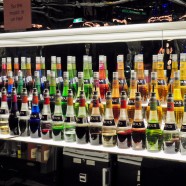





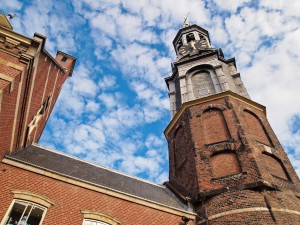

 Editor Marc Kassouf owns Pride Travel agency. He holds numerous travel industry certifications and has received one of the travel industry’s most prestigious awards, the WAVE TrendSetter, four times; the TrendSetter recognizes excellence and exceptional achievements of travel agencies and their executives. Kassouf sat on two board committees of the International Gay and Lesbian Travel Association, has traveled to nearly four dozen countries and has sailed on more than 60 cruises.
Editor Marc Kassouf owns Pride Travel agency. He holds numerous travel industry certifications and has received one of the travel industry’s most prestigious awards, the WAVE TrendSetter, four times; the TrendSetter recognizes excellence and exceptional achievements of travel agencies and their executives. Kassouf sat on two board committees of the International Gay and Lesbian Travel Association, has traveled to nearly four dozen countries and has sailed on more than 60 cruises.





